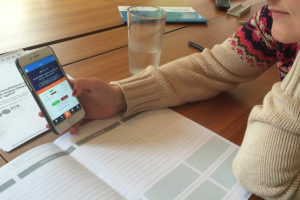
Consulting on consultations for GDS
Consultation is a long-established part of the policy-making process, both in the UK and in many other countries worldwide.

In the UK, there are no fixed legal requirements about what this consultation process must look like and many of the processes live in people’s heads, with a wide variation of approaches across departments. In June 2016, in partnership with The Democratic Society, we were asked to undertake a six week Discovery sprint to explore how the process of online consultations, as run by central government, could be improved.
With a view of providing Government Digital Service (GDS) a recommendation about what to build (or not) and build a solid foundation of research for internal service designers to build on, we set about a series of interviews. Speaking to 60+ people, DemSoc undertook desk research and expert interviews to build up a global picture of best practice. In parallel Snook facilitated two-week long user research sprints with government departments, non-departmental public bodies, expert respondents and the general public.
Despite the lack of a required format or process for consultation, there is a clear, common model for undertaking online consultations in the UK. What we call the ‘Q&A format’ is primarily based around respondents answering a series of questions in a survey format. Working alongside our research participants, we mapped the end-to-end process. This involved understanding the original motivation for consultation, how the questions were decided and written, right through to the respondents’ interaction and receipt of an output after the consultation has closed.
We captured detailed insights into the reality of what was happening at each stage. For example, understanding that some consultations need a lot of sign-offs and looking into the respondent’s desire to understand the reasons behind the requirement to submit particular personal data. Capturing the detail, reality and variety of each stage built a picture of the current process of online consultation.
“Four sign offs on the draft policy, three sign offs on the launch date, including putting it through Number 10…”
At Snook, we are big believers in ‘working live’. Documenting use cases live during the research process allowed us to quickly document the future needs of the users across the process as we began to identify opportunities for improvement on both respondent and creator sides. We found that creators need to split big consultations into sections so that they can direct respondents to sections relevant to them. Respondents also need to be able to see all the questions at once so that they can print them out and share them with their organisation.
Q&A, while the dominant model in the UK, is just one approach to consultation. With a growing civic tech market, we’re seeing examples around the world of alternative models of engagement, from broad ‘ideation’ models in Iceland to more detailed ‘commenting’ approaches in the USA. Adding to this, the prominent finding from the research is that culture plays as much, if not more, of a part than technology. What quickly emerged can be described in the words of Caroline Lucas:
“Digital democracy is not a silver bullet”
The recommendations to GDS, based on our user research, followed a tiered format. What could they do tomorrow but also, what could the future model shape up to be. With DemSoc, we provided a suite of short-term recommendations centered around small changes to the GOV.UK platform. For example, segregating open and closed consultations and listing the full name of a department rather than the abbreviation. Language is as much a part of service design as the process is.
Looking at the future, DemSoc’s research into the global landscape revealed a multitude of emerging products and platforms within the civic tech space. Equally, the user research revealed a wide range and differentiation of user needs. The key recommendation that followed was to create an open and extensible core infrastructure into which consultation tools, from in-house or external developers, can be inputted – consequently stimulating the market in this space.
This infrastructure should focus on functions common to all consultations such as continuity of communication with respondents, creating and growing an audience for engagement. It should be designed as such that tools for interaction – be that a survey or a space for deliberative discussion – can be embedded easily, allowing for a smoother and more consistent consultation experience.
Building on this recommendation, the user research identified that the most common need for civil servants at present is a simple survey module with built-in backend support for government bodies and non-departmental public bodies. With Q&A being the dominant model, and creators currently using a variety of external providers, linking a survey tool into the core consultation infrastructure would answer the needs of a large segment of users while streamlining the experience for respondents and providing guidance for creators.
Creating an approach that supports innovation in this sector would enable new and emerging consultation tools to be incorporated quickly into government practice, allowing development of new consultation methodologies – helping us to move towards a more iterative, collaborative and flexible democracy.